Text
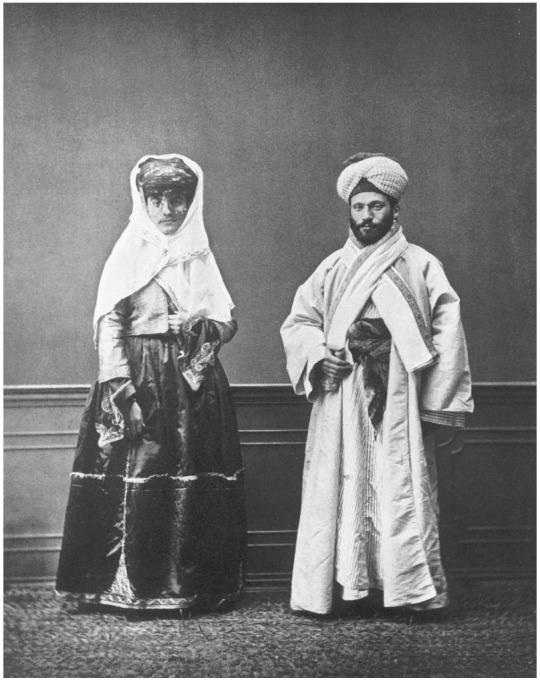
A Jewish couple in Ottoman Jerusalem, 19th century.
The man wears a striped sudra as a turban, while most citified Arabs at the time wore the Turkish tarboush (fez). The sudra, either worn around the neck or on the head, is a rare, authentic piece of indigenous Jewish dress, that is believed to be thousands of years old and is referred to in the Bible. Today, it is less known due to cultural colonization and from Jews being forced to collectively remove them due to persecution.
387 notes
·
View notes
Text

Leonard Cohen at the Wailing Wall, Jerusalem, 1973. Unknown photographer.
637 notes
·
View notes
Text
“It is extremely difficult to follow the progressive hardening of enmity from one day to the next. Suddenly you find yourself surrounded on all sides, and have no idea how or when it happened. Scattered minor occurrences, gestures of no great account, the making of casual little threats. An argument in a tram today, a newspaper article tomorrow, a broken window after that. These things seem random, unconnected, frivolous. Then, one fine morning, you feel unable to breathe.”
— Mihail Sebastian, For Two Thousand Years (trans. Philip Ó Ceallaigh)
#words#mihail sebastian#one of the most fascinating romanian jewish texts ever tbh. disturbing and upsetting and evocative#the sheer ugliness and unrelenting humiliation of trying to belong as a jew; trying to love a place that does not love you back#the spectre of the holocaust over this text that precedes it;#reading it knowing that the author has not even fully comprehended how much this place does not love him
356 notes
·
View notes
Text

Young Jewish woman on Passover in Sao Paulo, Brazil, 1984
4K notes
·
View notes
Text

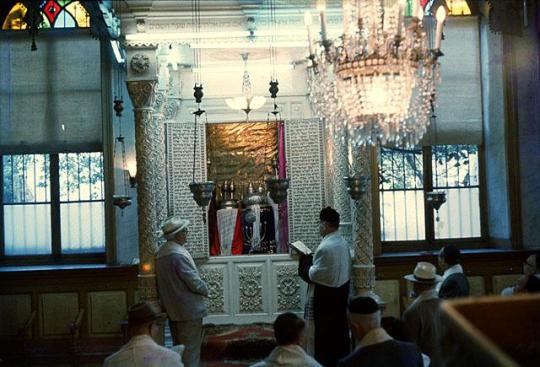
Praying in front of the Ark of the Law in a synagogue in Ankara, Turkey, 1964.
178 notes
·
View notes
Text
I kiss you, disheveled Jewish life, I cry with the joy of coming back.
from "Good Night, World" by Jacob Glatstein, translated from Yiddish by Ruth Whitman
678 notes
·
View notes
Photo

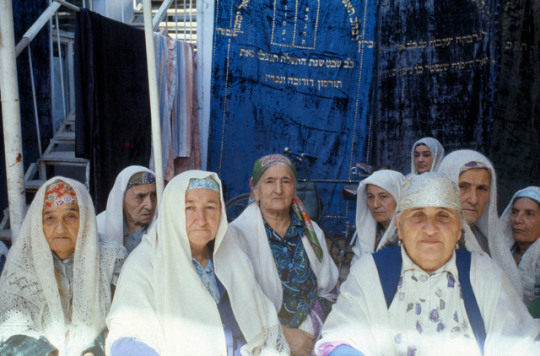
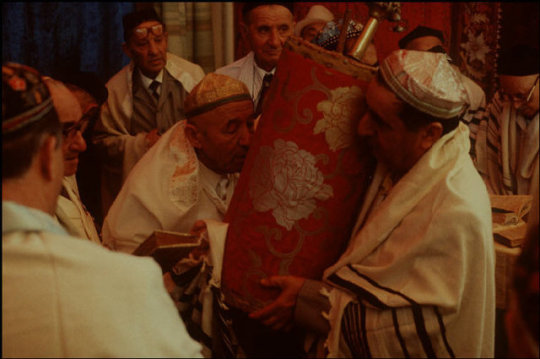






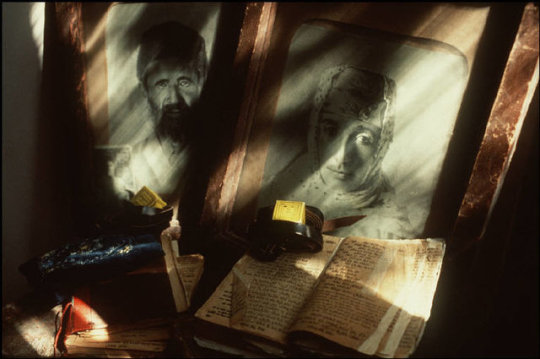
The Jewish people of Uzbekistan photographed by Gueorgui Pinkhassov
“The term Bukharan was coined by European travelers who visited Central Asia around the 16th century. Since most of the Jewish community at the time lived under the Emirate of Bukhara, they came to be known as Bukharan Jews. The name by which the community called itself is “Isro'il” (Israelites).
The appellative Bukharian was adopted by Bukharan Jews who moved to English-speaking countries, in an anglicisation of the Hebrew Bukhari. However, Bukharan was the term used historically by English writers, as it was for other aspects of Bukhara.
Bukharan Jews used the Persian language to communicate among themselves and later developed Bukhori, a Tajik dialect of the Persian language with small linguistic traces of Hebrew. This language provided easier communication with their neighboring communities and was used for all cultural and educational life among the Jews. It was used widely until the area was “Russified” by the Russians and the dissemination of “religious” information was halted. The elderly Bukharan generation use Bukhori as their primary language but speak Russian with a slight Bukharan accent. The younger generation use Russian as their primary language, but do understand or speak Bukhori.
The Bukharan Jews are Mizrahi Jews and have been introduced to and practice Sephardic Judaism.
The first primary written account of Jews in Central Asia dates to the beginning of the 4th century CE. It is recalled in the Talmud by Rabbi Shmuel bar Bisna, a member of the Talmudic academy in Pumbeditha, who traveled to Margiana (present-day Merv in Turkmenistan) and feared that the wine and alcohol produced by local Jews was not kosher. The presence of Jewish communities in Merv is also proven by Jewish writings on ossuaries from the 5th and 6th centuries, uncovered between 1954 and 1956.”
3K notes
·
View notes
Photo

Hanukah lamp adorned with damascene work and a crescent, silversmith: Morice Masslaton
Damascus, Syria, 1925
Inscribed in Hebrew and Arabic: “These lights are sacred”; in Hebrew: “This Hanukah lamp to the Shmaya synagogue in Damascus” and the Hebrew year 5685.
213 notes
·
View notes
Video
youtube
Sephardic song from Turkey
In this song Turkish Jews describe the Balkan Wars (1912-1913), when European armies were invading Edirne. Many Sephardic Jews served in the Ottoman Army. Until the 19th century the Spanish Jews who lived in Turkey were not yet serving in the Ottoman Army but in 1826 the Janissary soldiers revolted and they were disbanded by Sultan Mahmud, and as a result, the Sephardic Jews were gradually recruited as soldiers into the Turkish Army and many of them died during the Balkan Wars. The song is in Ladino, which is a version of old Spanish adopted by Sephardic Jews more than 500 years ago. In this song the city of Luleburgaz, where the Jewish Turkish soldier died, is located in Edirne near the Bulgarian border… Most interestingly, the last stanza lays the blame on King Ferdinand and his Edict of Expulsion (1492).
316 notes
·
View notes
Photo

Ancient brass comb with the Lion of Judah. Its inscription says, “A day of darkness, a day of mayhem comes upon us.”
3K notes
·
View notes
Text

Parochet Shiviti. Embroidery. Istanbul, Turkey, 18th century
650 notes
·
View notes
Photo

Rabbi Nathan Alfred dances with young Jewish children during Simchat Torah at the United Hebrew Congregation in Singapore; 2016. x
210 notes
·
View notes
Photo

Inscription from a medieval synagogue in Cochin, India. There was a thriving Jewish community in this and many other Indian Ocean trade cities dating back perhaps to late antiquity.
Photo by Robin Klein
2K notes
·
View notes
Photo

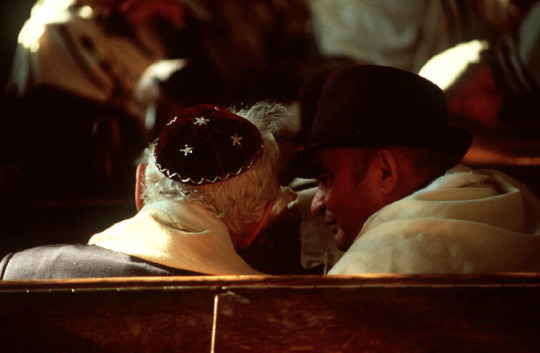

Synagogue in Moscow, Russia, 1989. Gueorgui Pinkhassov.
1K notes
·
View notes
Photo


Miss Iraq in 1947, Renee Dankour.
Dankour was the first beauty pageant winner to be crowned as Miss Iraq in 1947. Dankour was from an Iraqi-Jewish family in Baghdad. She was born and raised in Baghdad, and passed away 7 years ago in London.
6K notes
·
View notes

